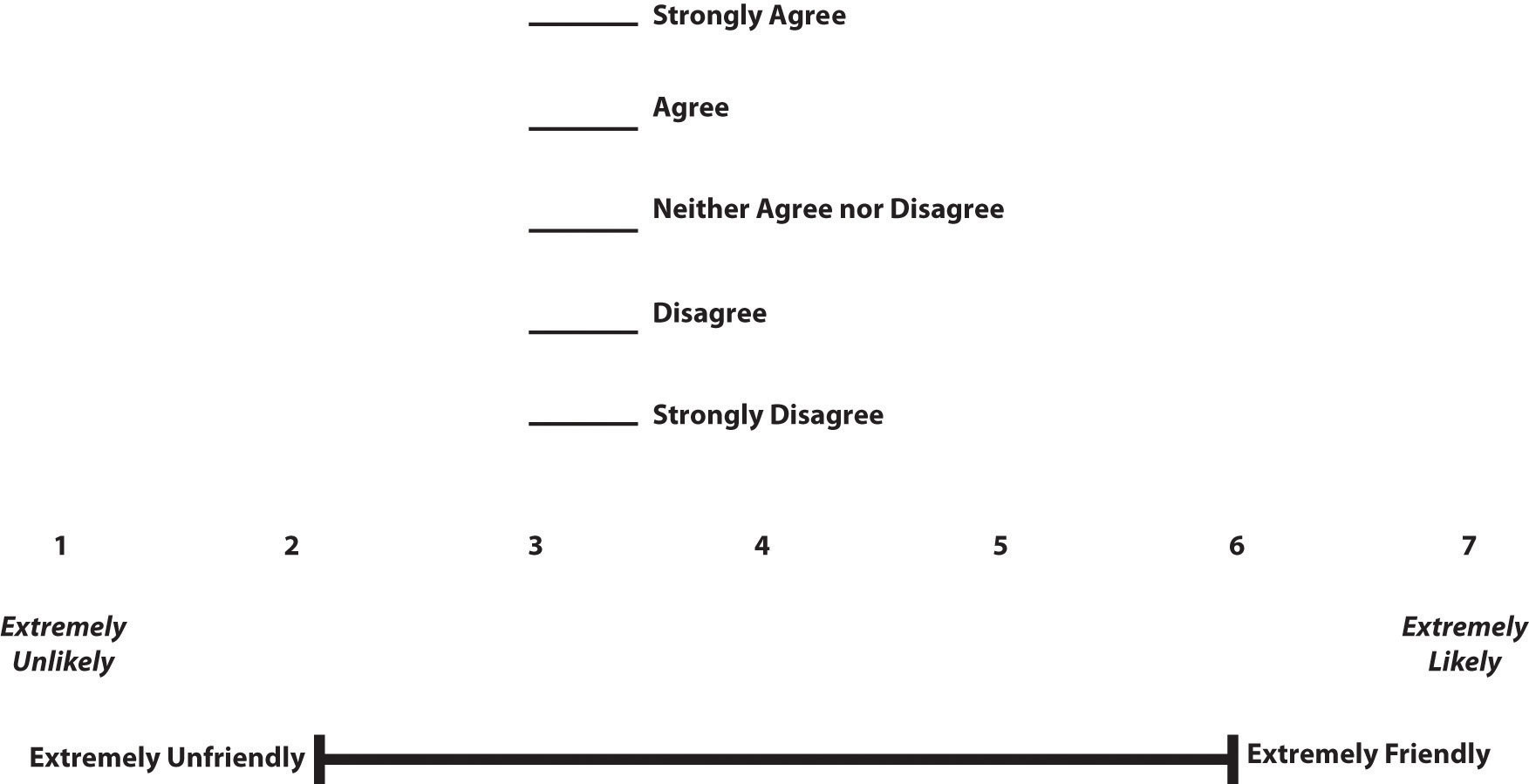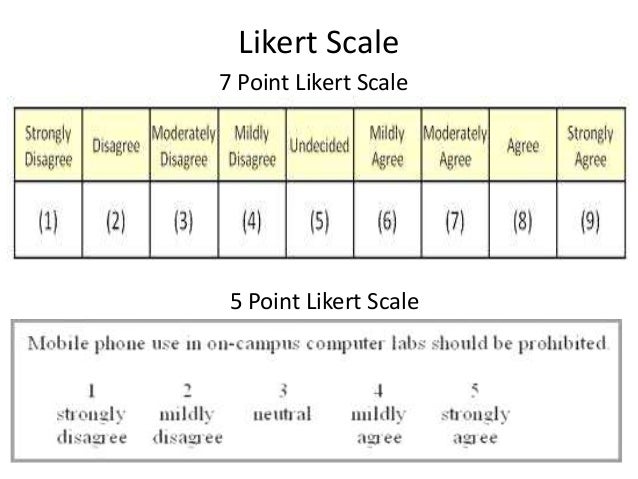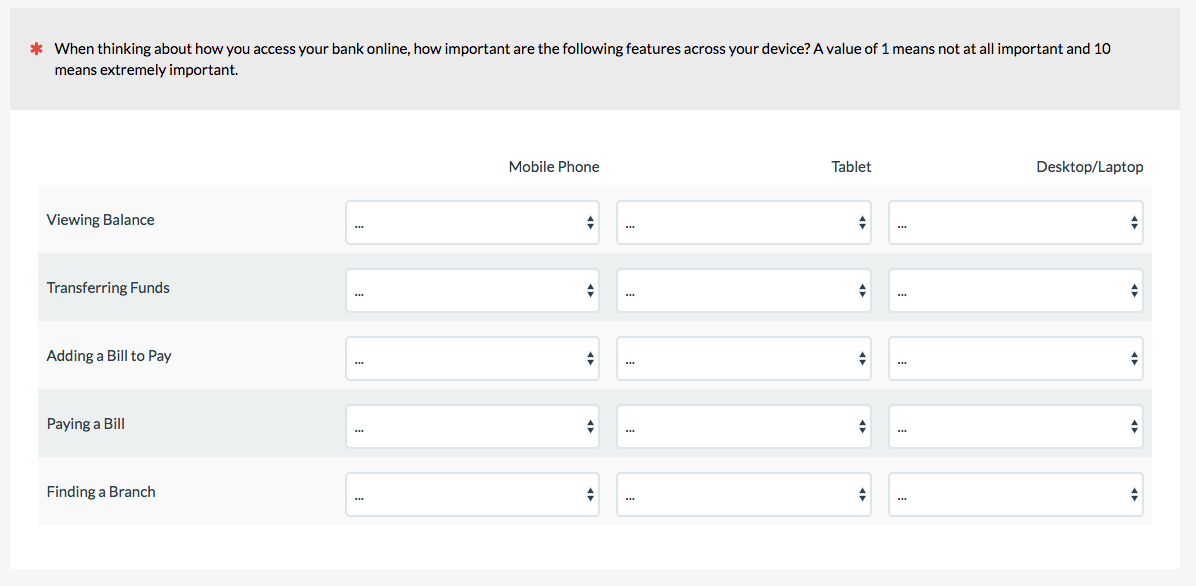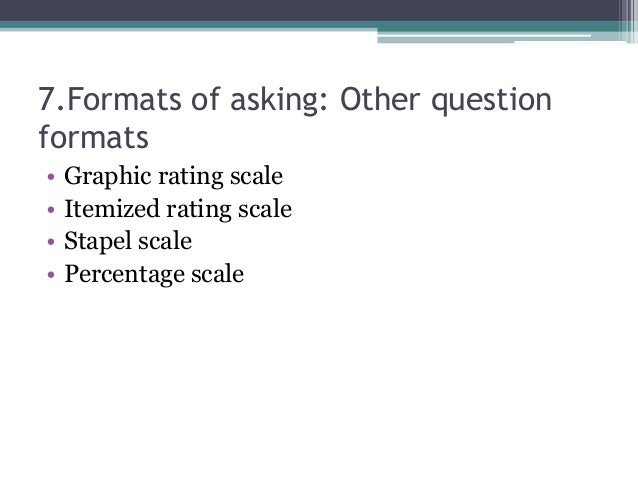40 survey rating scale labels
Analyzing and Interpreting Data From Rating Scales The instructions ask the students to rate on a 1 (bad) to 5 (good) scale for each of the below factors, beginning with a global rating for " Overall Satisfaction ". Our goal is to gain more insight into how students' feel about their experience throughout the curriculum. Feedback Form Questions Understanding The Rating Scale Satisfaction Surveys and Questionnaire Rating Scales To design a rating scale question for your satisfaction survey, you must consider: 1. What aspects of the product or service to measure. 2. What measurement scale to use: Level of Satisfaction. How well the product or service meets expectations. How good or bad the product or service is. Level of Importance.
Survey rating scales: numbered vs worded lists | SurveyMonkey With worded labels, the researcher has the freedom to score and label categories however they feel without confusing the respondent. Scaling can also be unbalanced, and the scoring could look something like this: Extremely Good = 10 Very Good = 8 Good = 6 Not Bad = 5 Bad = 3 The Worst = 0

Survey rating scale labels
Rating and Ranking Levels of Satisfaction in Your Survey A possible scale is then: "Not at all Satisfied," "Partly Satisfied," "Satisfied," "More than Satisfied," "Very Satisfied," numbering 1 to 5 as an interval scale. Rather than a Very Good to Very Poor rating, this set of rating scale survey questions looks at levels of satisfaction. Survey Rating Scales to Guide Survey Respondents Effectively Your survey labels are the signposts that your respondents need to know exactly where they are, and exactly how it’s best for them to answer the question. Some final tips. There are some other things you can do to make sure that your data is consistently high quality. As you practice labels for your scales, make sure that: Every survey rating scale option is labelled with words, so the meaning is clear Matrix/Rating Scale Question | SurveyMonkey To add this question type: Drag and drop Matrix/Rating Scale into your survey from the BUILDER section of the sidebar. In the Rows fields, enter the items you want respondents to evaluate. In the Columns fields, enter the measurements you want respondents to use to evaluate the row items. Column choices should be applicable to every row item.
Survey rating scale labels. 1-to-10 Rating Scale Survey Template 🚀 Survicate A 1-to-10 rating scale is flexible and will let you investigate any aspect of customer experience you need. You can run general customer satisfaction surveys or ask about particular products or services. A 1-to-10 rating scale is especially useful for ranking questions, just as you can see in the template above. 20 Free Ready-Made Survey Rating Scale Examples - AidaForm Multiple Rating Matrix This type of rating scale is very widely used in online surveys. It looks like a compact version of four Linear Numeric Scales put together. Please rate your attitude towards each of the brands 1 - not at all favorable, 7 - extremely favorable, N/A - I do not know the brand 1 2 3 4 5 6 7 N/A Starbucks Pizza Hut AidaForm Should All Scale Points Be Labeled? - MeasuringU The scales had five points fully labeled: Always, Very Often, About As Often As Not, Very Seldom, and Never; two scales contained behavioral examples to help the students judge the faculty's performance. The scales with examples were generally preferred and performed better than the less labeled version. Which Rating Scales Should I Use? - Relevant Insights Semantic Differential Scale: A 7-point rating scale with endpoints associated with bipolar labels that have semantic meaning (e.g., bipolar adjectives like "friendly" and "unfriendly"). Variations of the Likert and Semantic Differential scales abound.
Employee Performance Rating Scales in 2022: Examples & Definitions Descriptive rating scales include descriptions of what each step up on the scale looks like. This could be as simple as different levels of agreement or complex as a set of specific actions an employee should have taken to achieve each level. Most Common Rating Scales: Likert vs. Semantic vs. Custom Likert Scales Survey Rating Scales - Voxco Rating scales allow survey responses to be analysed using quantitative scales. Opinions and behaviors can be measured on a scale, in order to extract constructive information from surveys. Without good survey rating scales, the information collected can contain biases, impacting survey results negatively. See what our clients say about Voxco PDF Design of Rating Scales in Questionnaires - GESIS: Home Balanced rating scales are symmetrical, that is, they have the same number of positive and negative categories. Third, the verbal labels should be generally comprehensible, or universal. And fourth, the rating scale categories should suggest apparently equidistant ranges between the categories. Designing a rating scale in this way is by no Managing Survey Rating Scales (Manage Scales option) Creating a New Scale Click the Add Scale button to create a new scale. Here you can give your scale a name - this is used when creating a rating scale on a new survey and so it should be meaningful. Next select the size of scale. Currently you can choose from 4, 5, 10 and 11 point scales.
Rating Scales lists and examples from HR-Survey.com Measures of Quality. Measures of Effectiveness. Measures of Skill Level. All Scales. Scales with 4 or fewer Points. 5-Points Scales. 6-Points Scales. 7 or more Points. Hide Example Items. How to Label Response Scale Points in Your Survey | Qualtrics Finally, to ensure that you get the highest-quality data possible, keep these four guidelines in mind as you practice labeling response scales: Ensure each scale point is verbally labeled; Use response options that correspond to the subject of the question; Use consistent language across the entire response scale; Use balanced scales What is a Survey Rating Scale? + [Types & Question Examples] A numerical rating scale is typically used to quantify qualitative data such as pain, feelings, product satisfaction, likelihood to recommend, customer loyalty and the like. Usually, the researcher labels the endpoints of the numerical rating scale in terms of the value that is being measured so that both ends represent the extremes of this value. Star Rating Question | SurveyMonkey Drag and drop Star Rating into your survey from the BUILDER section of the sidebar. Enter your question text. Adjust the settings under the Edit and Options tab. Click Save. Question Settings Under the Edit tab, you can adjust the following settings specific to the Star Rating question. Colors
Performance Rating Scale - How to build a fail proof ... - unremot Performance review rating scale 1-5 is an overall performance rating method that uses a total of 5 different categories to measure employee performance. Let us see one of the types of rating scale examples 1-5, 1 - Poor. 2 - Needs Improvement. 3 - Meets expectations.
Survey Response Scales - Answer Format and Types of Questions Rating Scales. Three-point, five-point, and seven-point scales are all included in the umbrella term "rating scale". A rating scale provides more than two options, in which the respondent can answer in neutrality over a question being asked. Examples: 1. Three-point Scales. Good - Fair - Poor; Agree - Undecided - Disagree
Survey Response Scales: How to Choose the Right One | CXL Survey response scales can be embedded in the survey (e.g., 1-5, 1-10, etc.), chosen via a drop-down menu, or included as part of the survey language. No matter how you choose to display the scale, the default ranges affect the precision of your data. For example, if a survey asks your age, a default range of 20-25 instead of 20-30 has ...
Three Tips for Effectively Designing Rating Scales - KAJIDATA Labels are key to avoiding ambiguity and respondent confusion. This means that partially labeled scales may not perform as well as a fully labeled scale and that numbers should only be used for scales collecting numeric data (not rating scales). Fully labeled scales have been shown to produce more reliable and valid data 6. Krosnick & Fabrigar ...
Rating Scale: Definition, Survey Question Types and Examples Rating Scale Definition Rating scale is defined as a closed-ended survey questionused to represent respondent feedback in a comparative form for specific particular features/products/services. It is one of the most established question types for online and offline surveys where survey respondents are expected to rate an attribute or feature.
Sample Likert Scales - Marquette University 1 - Never. 2 - Rarely, in less than 10% of the chances when I could have. 3 - Occasionally, in about 30% of the. chances when I could have. 4 - Sometimes, in about 50% of the chances when I could have. 5 - Frequently, in about 70% of the. chances when I could have. 6 - Usually, in about 90% of the chances I could have.
Survey rating scales—types and examples - SurveyMonkey Graphic scales are often used to evaluate staff performance. They're typically depicted in a table or matrix, with a list of qualities or traits down the left-hand column, and a series of rating options along the top row. The rating options can either be numbers, such as 1 to 5, or series of worded categories.
15 Common Rating Scales Explained - MeasuringU Here are 15 scales, in roughly the order of most to least commonly used. 1. Linear Numeric Scale In a linear numeric scale, participants provide some numeric response to a question or statement. This can include things like satisfaction, ease, brand favorability, feature importance, or likelihood to recommend.
Survey rating scales 1-5: Understand your audience better Businesses use survey rating scales to gather information about satisfaction levels, frequency of use, loyalty, and other customer data. Rating scales allow you to compare customer response data to determine which of your products and services are most effective. This data is essential for making informed business decisions across all departments.
How to Label Your 10-Point Scale - Versta Research Plenty of research shows that numeric scales going from 1 to 10 (ten points) are less effective than numeric scales going from 0 to 10 (eleven points). A recently published article in Survey Practice adds more evidence to that claim, and also suggests that the midpoint of the scale should be labeled along with the endpoints:
Matrix/Rating Scale Question | SurveyMonkey To add this question type: Drag and drop Matrix/Rating Scale into your survey from the BUILDER section of the sidebar. In the Rows fields, enter the items you want respondents to evaluate. In the Columns fields, enter the measurements you want respondents to use to evaluate the row items. Column choices should be applicable to every row item.
Survey Rating Scales to Guide Survey Respondents Effectively Your survey labels are the signposts that your respondents need to know exactly where they are, and exactly how it’s best for them to answer the question. Some final tips. There are some other things you can do to make sure that your data is consistently high quality. As you practice labels for your scales, make sure that: Every survey rating scale option is labelled with words, so the meaning is clear
Rating and Ranking Levels of Satisfaction in Your Survey A possible scale is then: "Not at all Satisfied," "Partly Satisfied," "Satisfied," "More than Satisfied," "Very Satisfied," numbering 1 to 5 as an interval scale. Rather than a Very Good to Very Poor rating, this set of rating scale survey questions looks at levels of satisfaction.











Post a Comment for "40 survey rating scale labels"